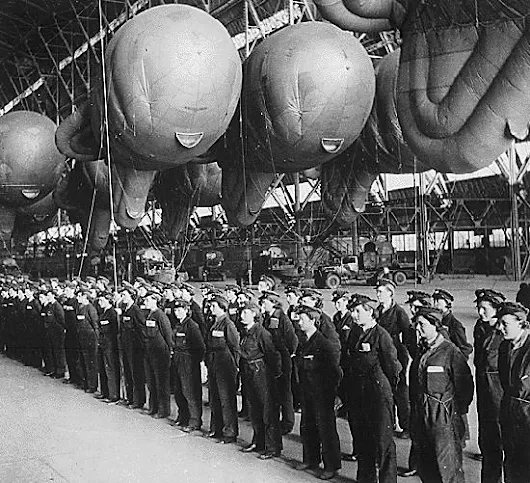When Biggin Hill was suffering one of its worst raids from German aircraft during the Battle of Britain in 1940, three brave members of the Women’s Auxiliary Air Force (WAAF) remained at their posts. As the building tumbled around them Sergeants Elisabeth Mortimer, Helen Turner and Corporal Elspeth Henderson worked throughout the attack to keep the station operational: they were later awarded the Military Medal for their bravery. This is just one example of how important for British victory were the roles played by the WAAF.
The WAAF was first established in 1939 by King George VI. There was previously an Auxiliary Territorial Service (ATS), the female force equivalent to the Territorial Army, but the WAAF itself sprung into being when the Government decided that a separate women’s air service was necessary. The WAAF was not an independent organization, nor was it completely integrated into the RAF. Rather it was interlinked with the RAF so that whenever possible RAF personnel could be substituted for women.
Originally the roles of the women of the WAAF were relatively domestic duties such as cooking and driving. Women were certainly not permitted to fly and it seems that their general abilities often doubted in the early years. However, during the Battle of Britain the RAF were under huge strain, resulting in a change of role for the WAAF. It became essential for the women of the organisation to take on more technical roles, and they were trained in radar plotting, the maintenance of barrage balloons and photographic interpretation.
There were several thousand young WAAFs in Fighter Command during that summer of 1940 and they played a vital role in the Dowding system of defence. This was essential during the Battle of Britain and later in guiding night fighters against the bomber formations attacking the UK. Initially, women served as radar reporters, using the huge Chain Home radars to locate raids and report their positions, as well as plotting these reports in the Sector Control Rooms. It was the plotter’s job to obtain information from the signals staff, often WAAFs themselves, who were listening to the reports from radar and Observer Corps’ posts. This information was then transferred to visual plaques on racks which were then positioned on the map, showing the position and direction of the raid as it progressed. Every raid was allotted a serial number and a prefix to indicate if it was friendly, hostile or unknown.
Many WAAFs were based at Fighter Command airbases such as Biggin Hill, Hawkinge, and Manston, which put them in great danger: these were all targets in the first raids by the Luftwaffe in the Battle of Britain. Without the tireless work and bravery of the WAAF the RAF would have struggled to cover all the necessary angles, which ultimately could have affected British victory. Many women who were possibly undervalued before their efforts in WAAF were transferred to the after the Battle of Britain had been won. They were not only valuable to the war effort but also to the general role of women in society. Through their exceptional work the women in the WAAF proved that women were fully capable of aiding the British war effort.



No comments:
Post a Comment
Note: Only a member of this blog may post a comment.